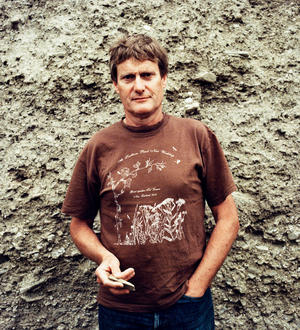2018 Doctors Flat, Pinot Noir, Central Otago, New Zealand
- Red
- Dry
- Medium Bodied
- Pinot Noir
- Bob Campbell MW
- 95/100
Add to wishlist
Product: 20188024224
75 cl Bottle
150 cl Magnum
Description
This is another fantastic example of a Central Otago Pinot Noir, as well as Steve Davies’ skill as a winemaker. The palate is ripe and succulent, its layers of juicy morello cherries and raspberries balanced by a burst of redcurrant acidity. Notes of thyme and roses bring an aromatic lift, while the 24% new French oak used during maturation brings a well-integrated hint of sweet cedar spice and savoury.
This is rich yet harmonious with a long, complex finish and palate of fine, velvety tannins. It is drinking beautifully now, but also worthy of being aged up to a decade.
Georgina Haacke, Fine Wine Buyer, Berry Bros. & Rudd (November 2021)
Colour Red
Sweetness Dry
Vintage 2018
Alcohol % 13.5
Grape List Pinot Noir
Body Medium Bodied
Property Doctors Flat Vineyard
Critics reviews
Bob Campbell MW 95/100
Produced from grapes grown in a 3-ha Bannockburn vineyard with 480, 000-year-old soils comprising clay, fine silt and gravel. A rich, weighty wine with intense plum, dark cherry, cassis, raspberry, floral and violet flavours. It improves with a little aeration before serving. 16 SEP 2021.Drink 2021 - 2028 Bob Campbell MW
Drink 2021 - 2028
About this wine

Pinot Noir
Pinot Noir is probably the most frustrating, and at times infuriating, wine grape in the world. However when it is successful, it can produce some of the most sublime wines known to man. This thin-skinned grape which grows in small, tight bunches performs well on well-drained, deepish limestone based subsoils as are found on Burgundy's Côte d'Or. Pinot Noir is more susceptible than other varieties to over cropping - concentration and varietal character disappear rapidly if yields are excessive and yields as little as 25hl/ha are the norm for some climats of the Côte d`Or.

Doctors Flat Vineyard
Doctors Flat Vineyard is a single 3-hectare site in Bannockburn in the wine region of Central Otago. The soil is deep gold-bearing gravels laid down by receding glaciers some 480,000 years ago. The Doctors Flat name is taken from an 1890 map of the Bannockburn Mining District that shows the Deep Lead & Doctors Flat Mining Co. held a claim on this site. The vineyard stands at 300m, higher and a bit cooler than most Bannockburn vineyard sites which allows the fruit to ripen slowly and retain its freshness and vivacity. The vineyard is farmed organically, and the winemaker, and founder of the property in 2002, Steve Davies has had extensive experience in wineries in Bordeaux (Ch. Senejac), California (Newton Vineyards and Saintsbury) and N. Zealand (Akarua), interspersed with a series of off-season harvests in Oregon and Burgundy. However he has done enough of the larger company/working for other people stuff and now devotes his time to Doctor’s Flat, a small project which he can manage on his own. The Doctors Flat wine is made in traditional fashion, vinified in small open tanks (1 to 4 tonne), a portion of whole bunch fruit, hand plunge and then left for a week or more on skins post ferment. The wine is is transferred to French oak barrels to mature for a period of 12 months and then racked clean into a small tank for a few more months to amalgamate and settle. The result is well-integrated wine, that's bottled with no fining or filtration in the second spring. It took a long and thorough search to find Doctors Flat Vineyard in 2002, an elevated site on deep, ancient glacial gravels in Bannockburn. The 3-hectare vineyard sits at about 100m above Lake Dunstan. It is cooler than most Bannockburn vineyards, with an increased risk of poor crop levels, but in return the fruit gains in flavour, identity and balance. The three hectares of Pinot Noir were planted with three Dijon clones (114, 115 and 777) on VSP trellis. Steve has developed Doctors Flat Vineyard from the outset, with labour-intensive organic farming in order to maximising fruit quality. The focus now is to build soil health, through organic farming. In the cellar Steve relies on a simple format of small open tanks, close attention, and minimal intervention to produce worthy wine that reflects its place of origin.
